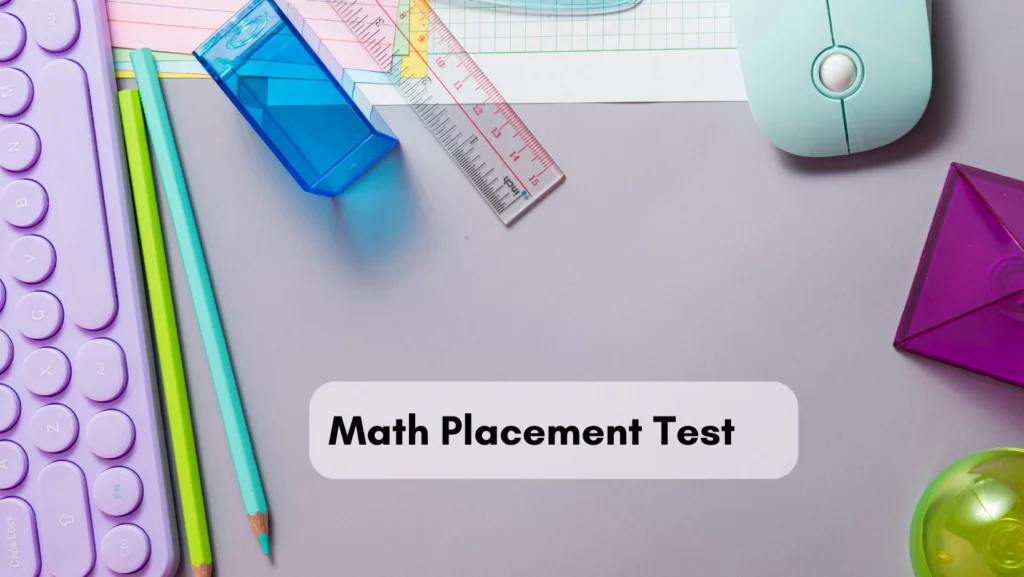The University of Wisconsin introduced a system-wide math placement test in 1978 for effectively placing math students into their appropriate courses. Since then, other universities, including Arizona State University, UC Berkeley, University of Washington, and University of Michigan, have developed their math placement tests. The college board administers the exam to students placed in selected colleges. Our experts explain what a math placement test entails, its purpose, and the scoring mechanism. Our experts also take math placement tests for learners needing help.
How the Math Placement Test Works?
According to various experts, most students need to be prepared and adequately informed about the courses to pursue at college. They choose programs that do not suit their talents or match their academic prowess. A math placement test is a paternalistic assessment for determining a suitable course for prospective math students depending on their math rigors and conceptual understanding. Scores from this mandatory exam are binding unless the students choose to retake the exam. Placement tests do not weed out students. Instead, they help universities determine manageable programs for a specific student based on their math rigor.
Math Placement Test Content Sections and Question Dynamics
A math placement test covers foundational math concepts learned across the high school level. However, there is no standard number and question type since the length, duration, format, and question structures differ among universities. Nevertheless, these exams have common topics, explained below:
Algebra
Algebraic concepts introduce learners to equations, variables, and fundamental rules learned at the college level. Success in the algebraic section of any math placement test determines the student’s aptitude to perform at college. Topics covered in algebra include simplifying algebraic expressions, factorizing algebraic expressions, linear and quadratic equations, linear inequalities, radicals and radical equations, functions, and solving literal equations.
Arithmetic
Understanding arithmetic concepts is the bedrock of math performance, including decimals, percentages, fractions, and integers. Performing the arithmetic operations on the math placement test allows learners to demonstrate their solid grasp of advanced math concepts. Questions on arithmetic cover integer arithmetic, rational and decimal arithmetic, and introducing algebraic skills.
Advanced Algebra
Learners seeking admission in higher-level math must perform on advanced algebraic questions. These concepts cover radical and fractional components, functions, applications of advanced algebra, complex numbers and theory of equations, exponentials and logarithms, and absolute value and inequalities.
Trigonometry
Trigonometric questions on math placement tests assess the learner’s understanding of the relationship between angles and sides in triangles. These concepts apply to other fields, including physics and engineering. The learners must demonstrate their knowledge of the basic trigonometrical definitions, identities, triangles, and graphs.
Quantitative Reasoning
Most universities, including Monroe College, assess learners on quantitative reasoning to evaluate their ability to interpret data and produce new information. These questions entail reading, identifying, and analyzing mathematical information. They also test finding appropriate math formulas and methods for solving problems, evaluating results validity, and effectively communicating quantitative concepts. A firm grasp of quantitative reasoning is necessary for performance in calculus and statistical courses.
Math Placement Test Results and Scoring
Most colleges post results on the student’s portal or a math placement test website within 4 business days. Tests administered via a proctoring system from a bank of questions are scored instantly. Colleges have minimum scores that determine the program to place a student into. For example, the University of Connecticut ranks students with a minimum score of 17 in Pre-calculus (Math 1060) and a minimum score of 22 in Calculus (1132Q and 1132 Q Honors, or 1131Q and 1131 Q Honors.)
A perfect score places a learner in the advanced level for all the sections they scored well in without needing additional classes. It allows the student to choose credit-based courses since they demonstrate the required math rigor. A dismal score places a learner in a lower-level category. Such students must invest additional time covering the basics to be eligible for credit-based courses.
Entry-Level Math Pathways in Math Placement Tests
Colleges, including UC San Diego, offer entry-level pathways for students with lower-level math placement scores. The three most common ways include the algebra pathway leading to calculus, the quantitative reasoning pathway, and the Pre-Calculus pathway. UC San Diego also offers preparatory math classes for lower-level scores designed to introduce students to credit-level courses like Calculus 10 series, Math 11, and Math 18.
Math Placement Retake Policy
Most colleges allow a maximum of three retakes per academic year for learners unsatisfied with their math placement exam scores. After successful retakes, the university will place a learner based on exams with the highest scores. For example, UC San Diego may still use the first exam take results to admit students if they score dismally in the retakes. However, math placement results have expiration dates from one to two years. Learners applying for a retake after expiration must start the exam afresh based on the particular university’s in-house rules.
Preparing for the Math Placement Test
The math placement test differs widely in format and content coverage depending on the college administering it. Adequate preparation using the official study guides, online practice tests, and tutor-recommended materials is necessary for students targeting top grades. Contact our experts for 1-on-1 clarifications and consultations and begin your journey to academic success.



